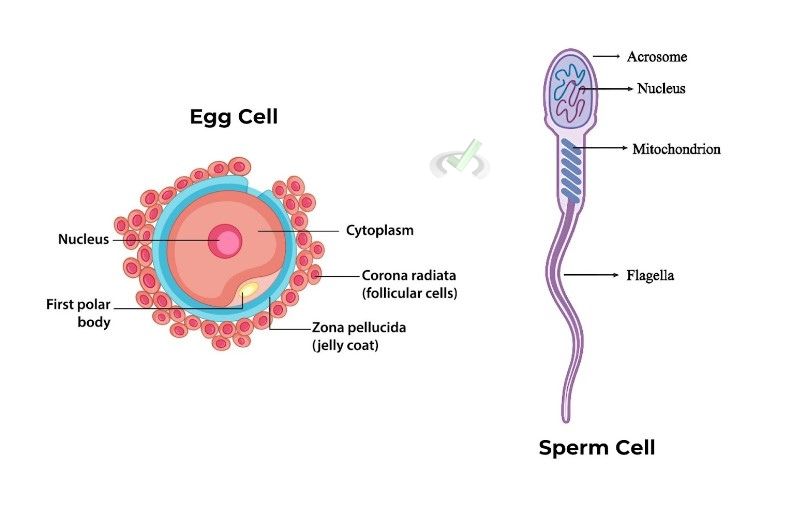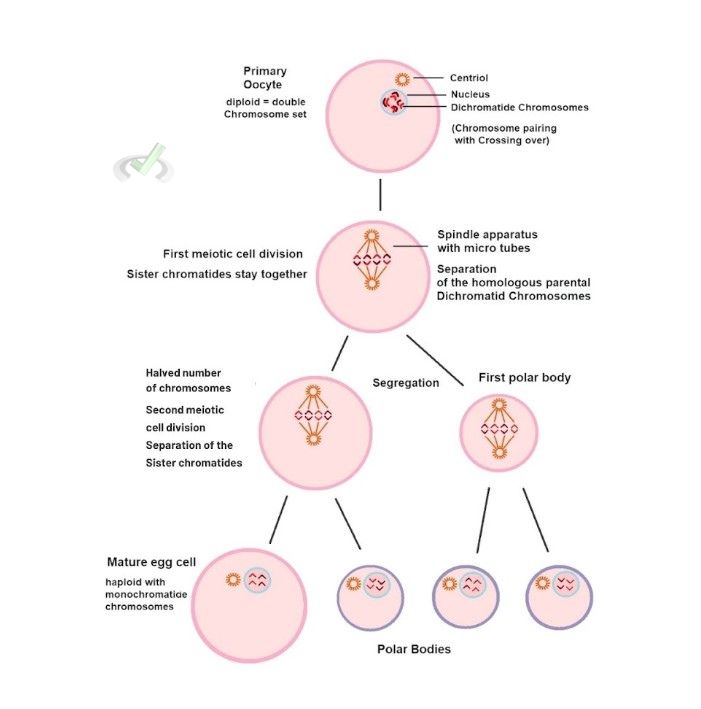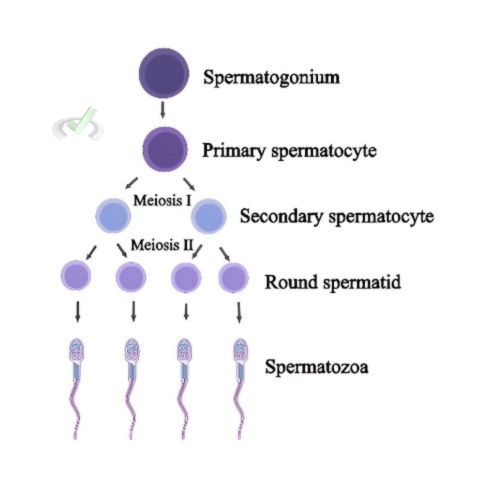Understanding how the ovum and sperm are formed is essential in biology. This process is known as gametogenesis.
It involves the development of gametes, the reproductive cells in animals and plants. Let's explore the details of gametogenesis to understand better how life begins.
I. Introduction to Gametogenesis
Imagine the journey of life beginning with two tiny cells coming together. These cells are called gametes, and they are essential for sexual reproduction. Gametogenesis is the process by which these gametes are produced.
There are two main types of gametes: ovum (egg cells) and sperm. These cells are crucial for sexual reproduction. They combine during fertilization to form a new organism.
Gametogenesis occurs in the reproductive organs. In males, it takes place in the testes, and in females, it occurs in the ovaries. It ensures that each gamete contains half the number of chromosomes in a normal body cell.

II. Ovum Formation: Oogenesis
Oogenesis is the process of forming ovum, or egg cells, in females. This process occurs in the ovaries and involves several stages.
Primordial Germ Cells
The process begins with primordial germ cells. These are the cells that will eventually develop into eggs. They undergo mitosis, a type of cell division, to produce a large number of oogonia.
Oogonia
Oogonia are the cells that will become mature eggs. They grow and divide, forming primary oocytes. Each primary oocyte enters a resting phase until the female reaches puberty.
Primary Oocytes
At puberty, hormonal changes. This involves the release of follicle-stimulating hormone (FSH) and luteinizing hormone (LH). They trigger the primary oocytes to resume their development.
Each primary oocyte undergoes the first meiotic division. It is a special type of cell division that reduces the number of chromosomes by half. This division produces a secondary oocyte and a smaller cell called a polar body.
Secondary Oocytes
The secondary oocyte begins the second meiotic division but stops partway through. This division will only be completed if fertilization occurs.
If a sperm cell fertilizes the secondary oocyte, it completes the second meiotic division. Then, it forms a mature ovum and another polar body.

III. Sperm Formation: Spermatogenesis
Spermatogenesis is the process of forming sperm cells in males. This process occurs in the testes and involves several stages.
Primordial Germ Cells
Like in oogenesis, spermatogenesis starts with primordial germ cells. These cells undergo mitosis to produce spermatogonia.
Spermatogonia
Spermatogonia are the cells that will develop into mature sperm. They divide by mitosis to produce primary spermatocytes.
Primary Spermatocytes
Primary spermatocytes undergo the first meiotic division, reducing the chromosome number by half. This division produces two secondary spermatocytes.
Secondary Spermatocytes
Each secondary spermatocyte undergoes the second meiotic division, resulting in four spermatids. Each spermatid has half the chromosome number of the original cell.
Spermatids
Spermatids are immature sperm cells. They undergo a series of changes known as spermiogenesis.
This process matures spermatozoa or sperm cells. During spermiogenesis, spermatids develop tails. They also streamline their shapes to become efficient at swimming.
IV. Comparison and Importance of Gametogenesis
Gametogenesis in both males and females ensures genetic diversity. It also facilitates the proper number of chromosomes in offspring. Here are some key points of comparison:
Number of Gametes
Oogenesis produces one mature ovum from each primary oocyte. In contrast, spermatogenesis produces four mature sperm from each primary spermatocyte.
Timing
Oogenesis has long resting phases and typically produces one egg per menstrual cycle. Spermatogenesis is a continuous process that makes millions of sperm daily.
Genetic Variation
Both processes include meiotic divisions. This process introduces genetic variation through crossing over and independent assortment of chromosomes.
The creation of genetic diversity involves two processes: crossing over and independent assortment. Crossing over is a process by which the genetic material is exchanged between homologous chromosomes. In contrast, independent assortment is the random distribution of chromosomes to daughter cells.
V. Applications and Significance of Gametogenesis
Understanding gametogenesis is crucial not only for biology but also for practical applications in medicine and fertility treatments. Here are a few ways this knowledge is applied:
Fertility Treatments
Knowledge of gametogenesis helps in developing infertility treatments. Techniques like in vitro fertilization (IVF) rely on understanding how eggs and sperm are formed. They also depend on how eggs and sperm can be combined outside the body.
Genetic Counseling
Genetic counselors use information about gametogenesis to help couples understand their chances of passing on genetic disorders. This is especially important for families with a history of genetic diseases.
Stem Cell Research
Research into gametogenesis also contributes to advancements in stem cell therapy. Scientists study how germ cells develop to find new ways to treat diseases and injuries.
VI. Wrap-Up and Key Terms
Let’s review the key points we covered about ovum and sperm formation through gametogenesis:
Key Terms
- Gametogenesis: The process of forming gametes (sex cells).
- Oogenesis: Formation of egg cells (ovum) in females.
- Spermatogenesis: Formation of sperm cells in males.
- Primordial Germ Cells: Early cells that develop into gametes.
- Meiotic Division: A type of cell division reducing the chromosome number by half.
- Polar Body: Small cell produced during oogenesis that does not develop into an egg.
VII. Practice Questions
Sample Practice Question 1
What is the main difference between oogenesis and spermatogenesis regarding the number of gametes produced?
A. Oogenesis produces one mature ovum; spermatogenesis produces four mature sperm.
B. Oogenesis produces four mature ova; spermatogenesis produces one mature sperm.
C. Both produce the same number of mature gametes.
D. Oogenesis does not produce any mature gametes.
Ans. A
Oogenesis results in one mature ovum and polar bodies, while spermatogenesis results in four mature sperm cells.
Sample Practice Question 2
Which process involves the creation of a polar body?
A. Spermatogenesis
B. Oogenesis
C. Both
D. Neither
Ans. B
The primary oocyte divides during oogenesis, producing a secondary oocyte and a polar body. The secondary oocyte may divide again to form another polar body.








 To help you achieve your goal MCAT score, we take turns hosting these
To help you achieve your goal MCAT score, we take turns hosting these 





















 reviews on TrustPilot
reviews on TrustPilot